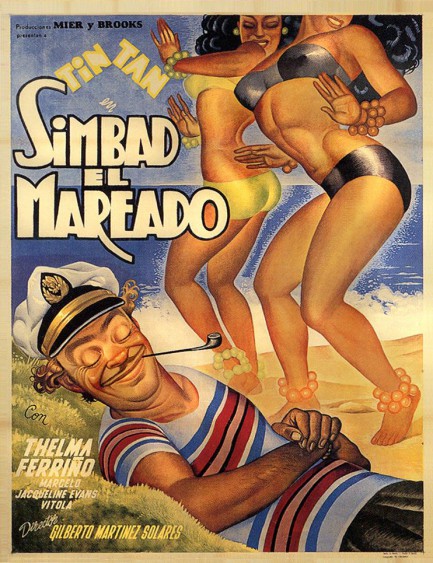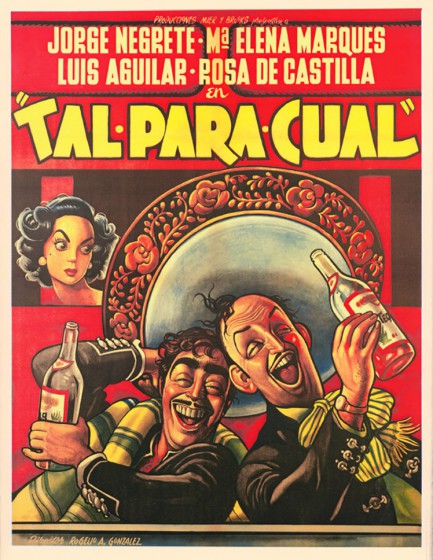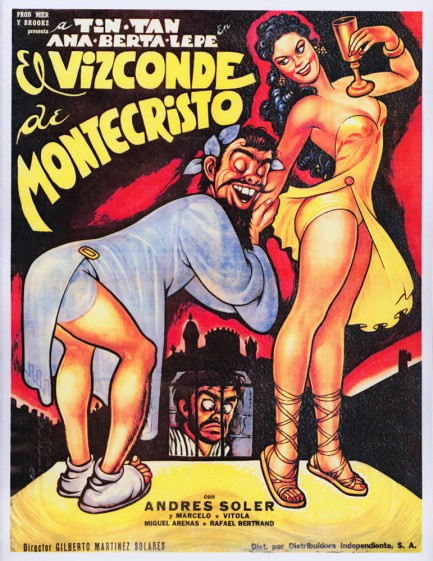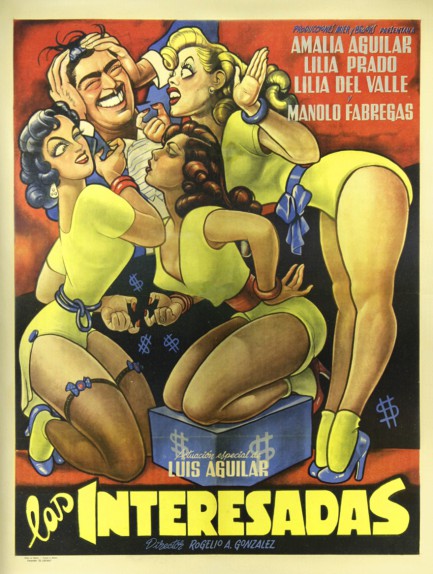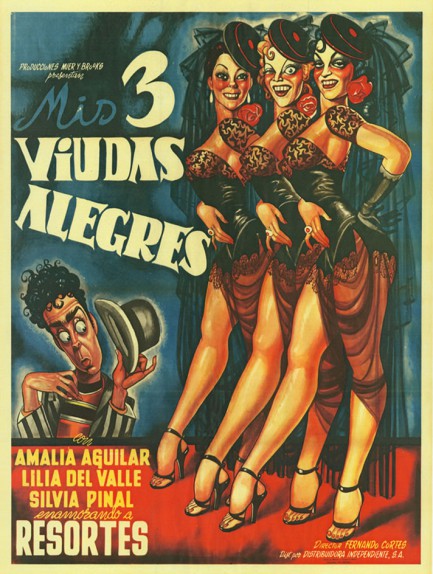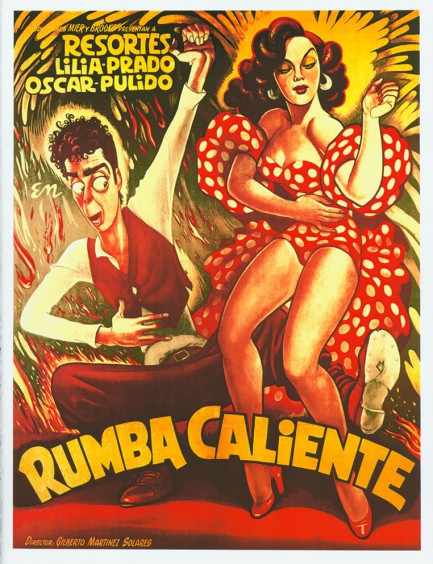| Vintage Pulp | Feb 4 2016 |

The prince and the pauper are one and the same.
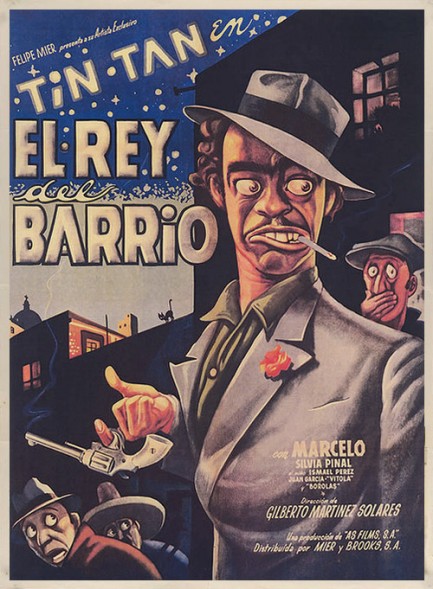
This striking promo for the Mexican comedy El rey del barrio was painted by Ernesto Garcia Cabral, who we discussed briefly in this post featuring a small collection of his creations. Garcia Cabral was born in Huatusco, Veracruz and would become one of the most published artists in Mexico, churning out cartoons, caricatures, and general illustrations. His early work, with its stylishly elongated flappers and sheiks, fits right into the art deco period, and his later work evolved to take on the form you see above. El rey del barrio premiered in Mexico today in 1950, and tells the story of a working class Joe who leads a double life. By day he's a kindly wage earner, but at night he dons zoot suit and cape—yes, cape—to become a thief and gangster. He's in love with a girl from his neighborhood, but keeping his second identity secret becomes increasingly harder as he bungles his way from caper to caper. You've see this story before, but probably not set in 1950s Mexico, and not with Germán Valdés, who was a rare comedic talent in the spastic mode of Jerry Lewis or Bob Hope. Silvia Pinal as his love interest is just the right mix of sweet and sassy. Add a bit of singing and some sexy nightclub dance numbers and you've got yourself a winner. The potential bad news is that there's no English language or subtitled version, as far as we know, but you've all learned Spanish by now, right? ¿No? Mas vale tarde que nunca, gabachos.
| Vintage Pulp | Sep 6 2015 |

Ernesto Garcia Cabral’s stylized work made him one of Mexico’s most collectible poster artists.
We’ve sung the praises of many European poster artists, but today we shift our attention to one from the Americas—Ernesto Garcia Cabral, aka El Chango, who was one of the top illustrators of Mexico during the mid-century period. His work appeared in publications such as El Universal Ilustrado, Excelsior, and Jueves de Excelsior, and he is also famed for his portraits of the acting legend Cantinflas. Below are six pieces of his genius work, and we’ll revisit him a bit later.
